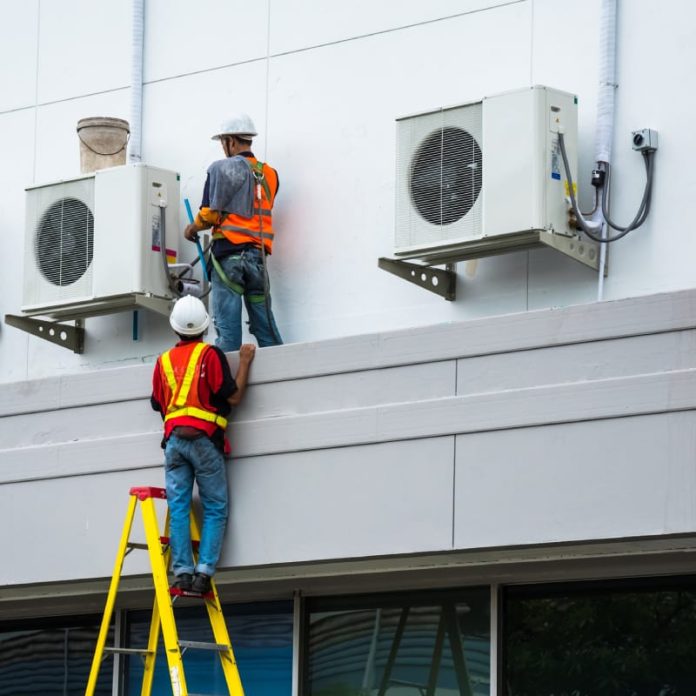Designing is obviously not limited to the fashion sector. Yes, the design of your heating and cooling systems is just as important as the design of your favorite attire. Your heating and cooling equipment wouldn’t fit quite properly and wouldn’t be as efficient as it could be if you didn’t have a good eye for HVAC design.
What is HVAC Design?
Some fundamental concepts are used in the design of HVAC (Heating, Ventilation, and Air Conditioning) systems to ensure that an efficient system is planned. Calculations to determine the capacity and size of equipment required, as well as the fundamental principle of operation, are all important elements in the design process. Calculating the heating and cooling load the system will maintain and taking into account factors such as local ambient temperature and humidity levels are the two most important things to consider when building an HVAC system. These calculations enable the property to be installed with the appropriate hardware. The heating and cooling demands of a fixed supply can be influenced by a variety of factors, all of which are taken into account during the design phase.
Types of HVAC Systems Design
It’s crucial to understand the various HVAC system varieties and the advantages of each unit before you construct your system. Types of HVAC include:
-
Traditional Split Systems
Two units make up a conventional split system, one for cooling and one for heating. In most split-system buildings, a gas furnace is put in the basement and an air conditioner is placed outside. In order to cool the air and expel hot air, the air conditioner uses coils, coolant, and compressors. Using an evaporator or fan, the furnace exhales hot air. Both systems are managed by thermostats, which let you adjust the temperature to your preference. The building’s heated or cooled air is distributed using ducts. For residential use, traditional split systems are a common choice.
-
Ductless Split Systems
If your room cannot accommodate conventional duct systems, consider a ductless system as an option. In a ductless system, a separate unit replaces the furnace or conventional air conditioner. These devices are mounted by specialists straight into the walls or ceilings of the spaces that require heating and cooling. Ductless split systems are a great option for buildings with different units, like apartment buildings and hotels, because each unit may be controlled by its own thermostat.
-
Hybrid Split System
In a hybrid split system, both heat pump and furnace are used. You have more control over your energy bills by selecting between the two units when deciding how to heat your house in the winter. The heat pump removes heat from your house throughout the summer, acting as an air conditioner. In order to function like a conventional split system, a hybrid system makes use of conventional ductwork and thermostats.
-
Packaged Systems
All critical heating and cooling components are housed in a single unit in a packaged system. Smaller rooms that cannot fit all the different pieces of a split system are well suited to the system’s compact design. These devices are set up by experts outside, and the air is drawn into and out of the system using a blower.
-
Geothermal Systems
Geothermal HVAC systems design heat and cool using the earth’s natural resources. In this arrangement, an electric pump circulates the fluid through underground pipes. The winter in mild temperatures of rock, earth, and water heat a fluid, which is then heated through a heat exchanger and used to heat your air. In the heat, this fluid absorbs from the air and scatters the heat into the ground. Because of this naturally occurring process, geothermal systems are four times more energy-efficient than conventional systems.
Basic HVAC Design
HVAC systems are used in manufacturing facilities to heat, ventilate and cool spacious interior spaces. The type of action required will depend on the facility’s requirements for air quality. Utilizing one or all three methods, the HVAC equipment can be modified to suit a specific environment.
The specifications for a design will vary depending on the location of the facility, the types of pollutants produced, the size of the structure, and the air quality in each part. For example, manufacturers may install air conditioning units that use covert cooling techniques instead of sensible cooling techniques when there are moisture problems in the building. Similarly, if a facility needs to remove a lot of hazardous gases from the air, it should use a combination of passive and active ventilation strategies.
Unique Design Requirements for Specific Facilities
An HVAC system may sometimes need to combine multiple components at once. A specialized HVAC system that ventilates toxic air while supplying the required heat is essential in manufacturing facilities that produce harmful pollutants and need to be heated. The implementation of a system with intelligent design will determine how successfully these two components interact.
When building an HVAC system, the changing internal and external environment of the facility must be taken into account. The efficiency of the unit may be affected by seasonal temperature changes as well as any planned production changes. The facilities should account for any regular changes in the environment and implement sophisticated control panels to handle these changes. Designers should install equipment that can transition smoothly between the two duties. for example, if the environment around the plant can alternate between cold and extreme heat. They should also locate the equipment where it is needed the most. Plant operators can maintain EPA air quality regulations and prevent production hiccups by using systems that are specifically designed to respond to and adapt to a certain environment.
How Significant Is HVAC Design?
When your system is implemented, you must ensure that it will operate as intended and comply with any applicable regulatory requirements. There are a number of detrimental potential effects if the design process is improperly executed. This can be problematic if the system is too small to operate as needed. A unit that is too tiny won’t have the desired heating or cooling effect in your office setting. A unit that is too large could cost more to operate in addition to costing more to build. Moreover, a poorly designed system is more likely to encounter problems that require more frequent maintenance and repair. Ductwork design is also important when ductwork is required. In fact, the efficiency of the system will be negatively impacted by inaccurate ducting design.
Why Choose Neville Engineering as Your Installer?
Since ten years ago, Neville Engineering has provided high-quality engineering services to home and company owners in Chicago and surrounding areas. Also in Indianapolis and Nashville as well. Our team is skilled in installing, repairing, and maintaining heating and cooling systems, electrical systems, house plumbing, water heaters, and controls. We also offer a variety of options including proven MEP systems and equipment to reduce manufacturing costs while maintaining quality. We rely on tried-and-true methods, tools, and processes to ensure that we can build and plan for our customers. Mechanical, electrical, and plumbing systems that are both affordable and of the highest quality. After all, the more thriving our customers are, the more successful we are.
Get your free quote or schedule an appointment today! Now that you know how much effort goes into properly planning and installing an HVAC system in your home. Maybe you have a better grasp of it. If you have any additional questions about how well your device is working, give us a call.



















